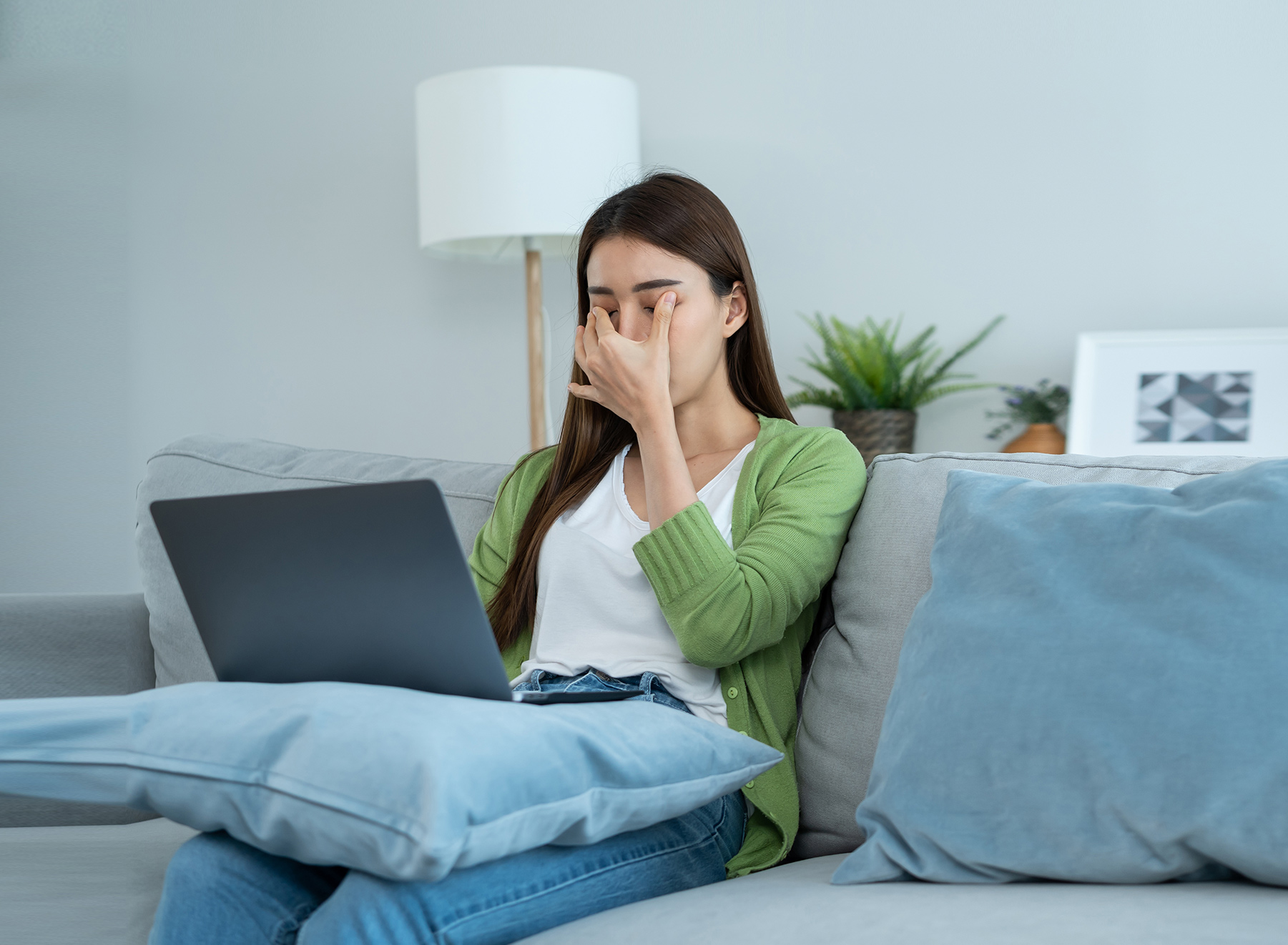If so, you’re not alone – and it could be your screen time that’s to blame…
According to research from Fight for Sight, more than 1 in 3 people in the UK reported deteriorating eyesight due to increased screen time over the pandemic. That went up to 42% of working adults, reporting issues such as difficulty reading, migraines, poorer night vision.
It makes sense that with many people stuck at home, work and social meetings went online – and that trend has stuck around as many people have moved to hybrid working patterns.
And it’s not just work – we’re on our screens a lot for leisure too, with constant scrolling also impacting our eyes. Your body knows it’s stationary, but your eyes are constantly moving and refocusing as you scroll, resulting for some people in more headaches and even nausea akin to travel sickness.
Sometimes called Computer Screen Syndrome, digital eye strain really is a thing – and could be affecting you. So how can you look after your eyes when screens are such a huge part of your life?
How to help digital eye strain
1. Adjust your computer
The placement of the screen you’re working from can make a big difference to your eyes.
- The bigger the screen the better
- Try and have it around 25 inches away from your head so it’s not too far or close to you
- Make sure your screen is in front of your eyes, so you’re looking straight forward or slightly down at the centre without having to look too far up
- Reduce glare by using a filter, or adjusting the brightness of your monitor
- Increase text size so you’re not straining to see detail.
2. Adjust your body
It can also be helpful to adjust your body. The way you sit can increase your risk of eye strain, so it’s important to think about your posture.
- Try and keep your ears over your shoulders so you’re not leaning forwards or back
- Pull your elbows down and your shoulders away from your ears
- Your feet should be flat on the floor
- Your knees should be level or slightly higher than your hips
- Your chair should support your back as you sit.
3. Have a drink
Keeping well hydrated can help stop your eyes going dry. That means 6-8 cups or glasses of fluid a day – according to the NHS.
4. Think blink
Blinking is the body’s way of lubricating the eyeballs – but research shows we do it less when looking at screens than we would do otherwise. Try and be aware of your blinking and think about doing it more often when your eyes feel dry.
It could also be worth investing in lubricating eyedrops from a pharmacy, or switching to glasses from contact lenses while you’re on a screen.
5. Take air care
Sometimes the air can affect our eyes too. Make sure you’re not in the draft of a fan, under the blast of air conditioning - or over-using the heating.
6. Get the light right
Bright light, particularly from overhead or through a nearby window, can cause glare on the screen. Try and move your desk, or use blinds and lamps so the light isn’t adding to your eye strain risk.
7. Ask for a workstation assessment
If you’ve adjusted your work space and you’re still struggling with your eyes, it’s time to ask your workplace for a workstation assessment.
By law, if you’re a regular user of Display Screen Equipment, your employer must do a workstation assessment, ensure you take regular breaks, provide an eye test - and provide you with training and information about the risks of using screens, and potential solutions. Where risks are found, they should also take steps to reduce them.
The rules apply whether you’re office-based, at home, or mobile.
8. Take regular breaks – off screen
The basic rule for screens is 20-20-20 – 20 seconds looking at something twenty feet away, every 20 minutes. And every 2 hours you should be taking a 15 minute break – but not on your phone! Go for a walk, make a cup of tea, or do something completely un-digital and different.
If you’re struggling to be offline and off-screen, it might be worth thinking about a Digital Detox…
9. Do some eye yoga
Yes, it’s a thing! Eye exercises can apparently reduce the symptoms of eye strain.
There’s lots of videos and resources online to follow, but Specsavers suggests things like focusing on the tip of a pen as you bring it from arms-length towards you, trying to keep the image clear all the way to your nose. You can also give your eye muscles a workout by ‘jumping’ between close focus on the tip of a pen to a point 3 or 4 metres away and back.
10. Get an eye test
If you use screens regularly it’s really important that you’re getting your eyes checked regularly, too. The NHS recommends the average person gets their eyes checked by an optician every 2 years.
Remember, if you’re a regular screen user at work your employer should pay for a test at your request!
And finally…
Check to see if Dental and Optical cover are included on your Equipsme plan. If it is, you’ll get 100% payback on glasses and contact lenses up to £100 each year, plus £25 towards an eye test each year, too.
References and further information:

